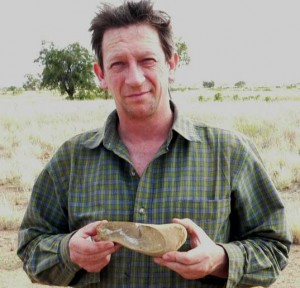Missing link fossil shows sharks are far more evolved than previously thought

Sharks are far more evolved than we thought, scientists have discovered after finding an ancient "missing link" fossil of a bonier form of the fish group.
The team from Flinders University in Australia found fossil remains in 2005 and detailed CT scans have now shown the three-dimensional skeleton contained a small proportion of bones as well as cartilage.
Modern sharks and rays have entirely cartilaginous skeletons, causing earlier experts to assume they were part of a primitive evolutionary pathway. They thought bony fish were more advanced than sharks.
However, scientists are increasingly finding evidence to suggest the opposite, that sharks are the more highly developed.
Publishing their findings in the journal PLOS One, scientists said the fossil of Gogoselachus lynbeazleyae dates to the Late Devonian Period, around 380 million years ago, and shows the evolutionary transition from bones to cartilage.

Study author John Long said: "Our shark more or less nails that theory, because here we have a heavily mineralised type of cartilage in the skeleton, which contains remnant bone cells.
"It's almost a missing link condition showing that early sharks had a lot more bone in their skeleton, and that just before modern sharks evolved they lost the bone, with only the soft cartilage remaining."
He said sharks from the Devonian Period are not well known and most research is based on fossilised teeth. Their shark (found in the Gogo Formation in Western Australia, which was once a tropical reef) is rare because of how complete it is.
Long said: "This is a partial articulated skeleton, with the jaws and shoulder and all the teeth and scales, but best of all, we have acid-etched the fossils out of the rock, so they are three-dimensional, uncrushed and perfect. It's the first time a shark of that age has been prepared in that manner."
Concluding, the authors said the shark is an "exceptionally preserved" fossil that "suggests Gogoselachus represents a transitional step toward the tessellated prismatic calcified cartilage which is today recognised as the main diagnostic character of the Chondrichthyes".
© Copyright IBTimes 2025. All rights reserved.






















